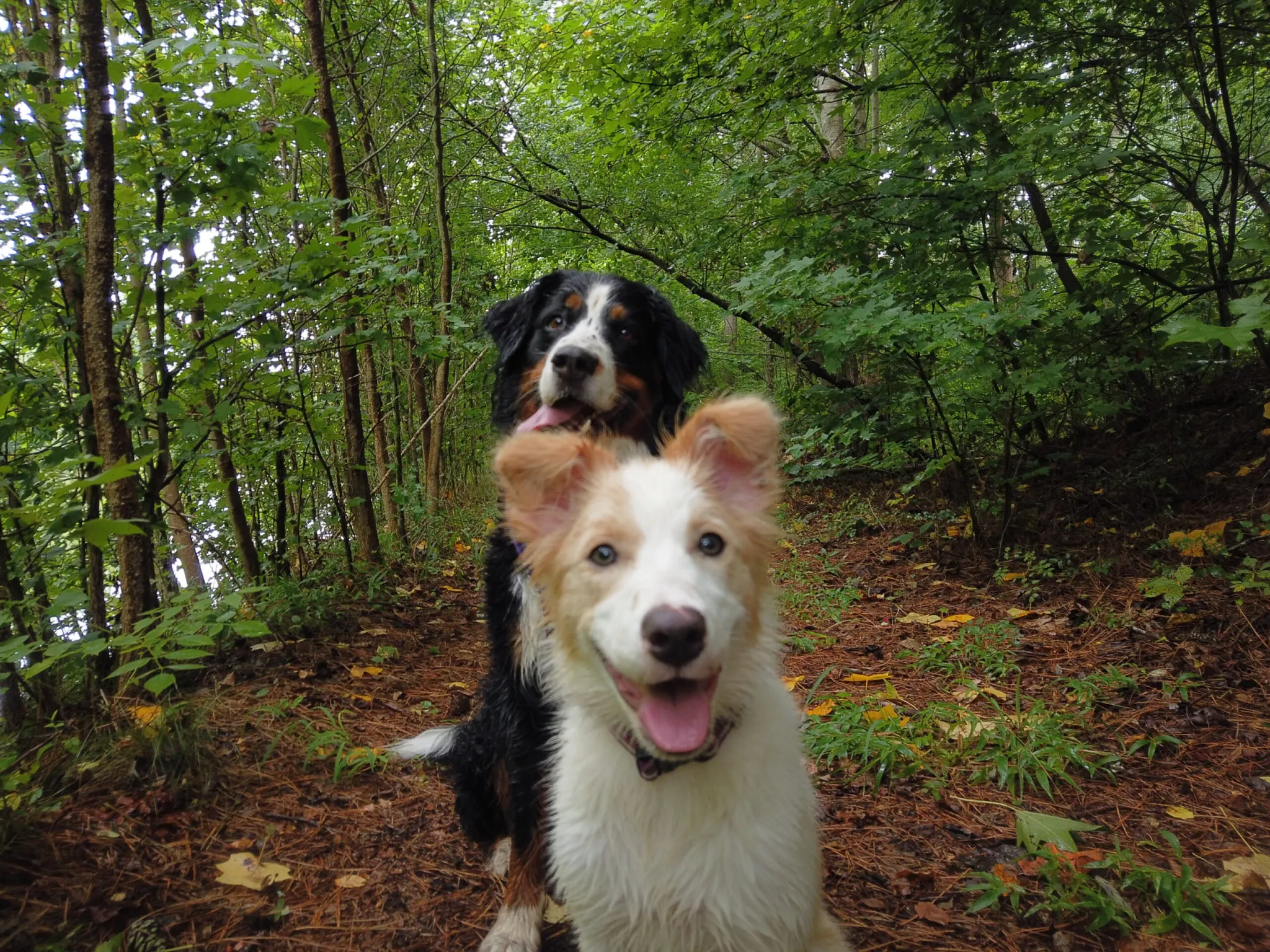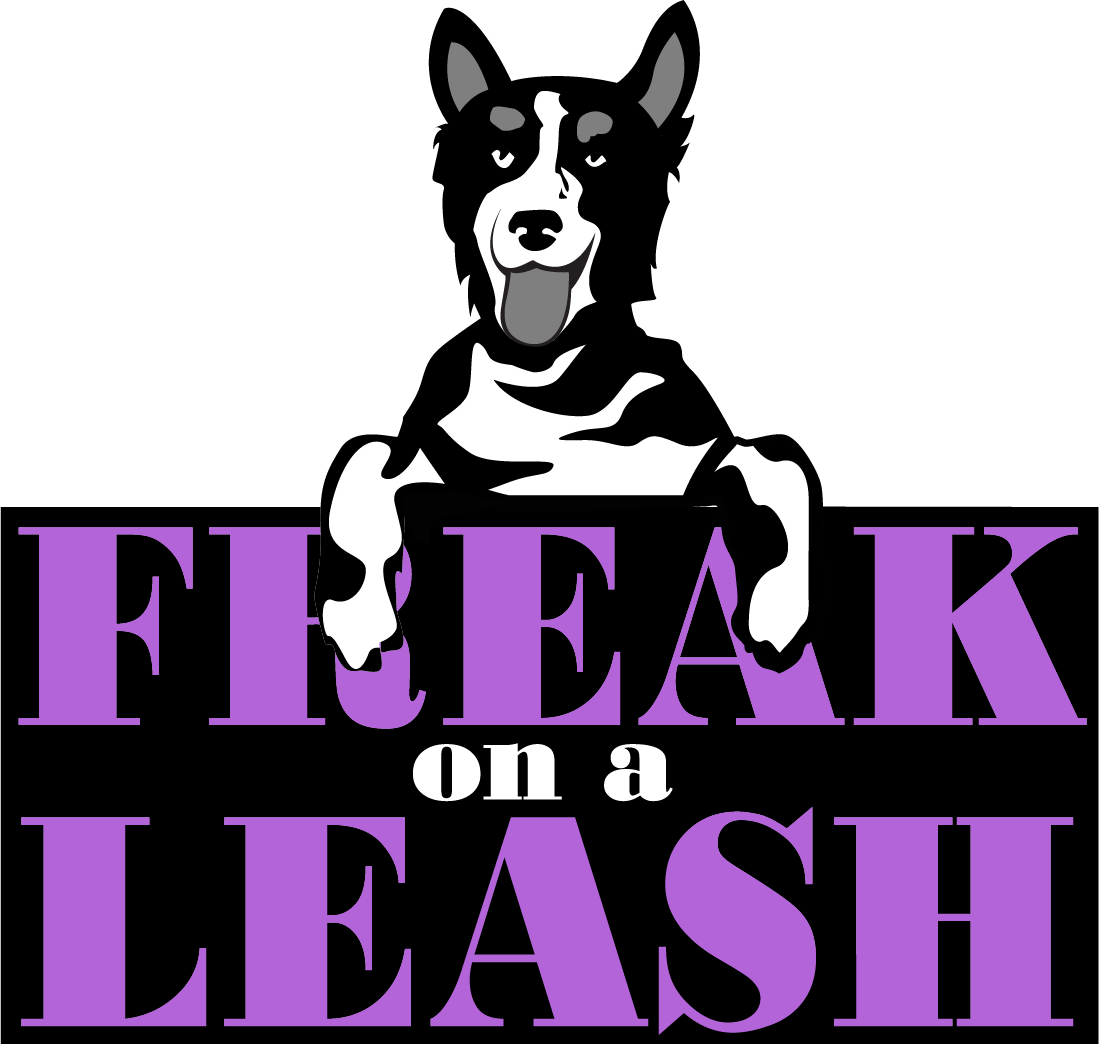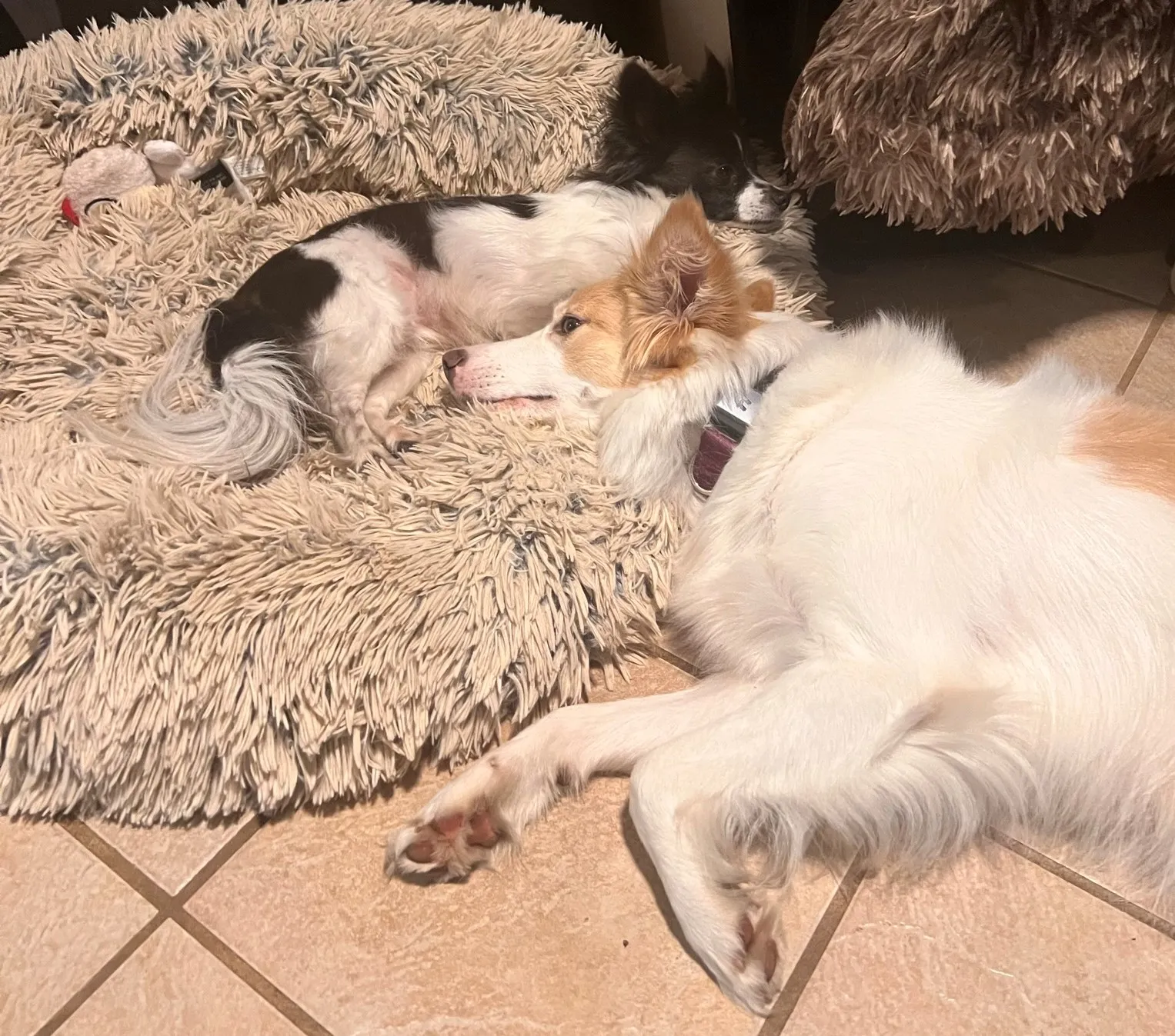Adding another dog to your home
There are many things you can do things before picking out your new family member to set yourself and your dogs up for success when deciding introducing a new dog to your home.
Before adding another dog
- Pick a dog that has a similar play style as your dog.
- Similar energy levels in dogs are usually better than choosing a very laid-back dog for your high-energy resident dog, or a high-energy dog/puppy for your very laid-back resident dog.
- Similar sizes in the dogs are helpful. Having a Great Dane and a Chihuahua might sound cute but in case of conflict, the Chihuahua has a very high risk of seriously getting injured.
- It is a good idea to have a bit of a difference in age so you are not finding yourself managing two or more teenage/adolescent dogs at the same time. The best age difference is often between 2 and 4 years. Your dog is mature but not geriatric and still has lots of energy to keep up with a puppy.
- Opposite-sex pairs often do better together than same-sex pairs
- Getting a puppy when your dog is at a geriatric stage is not fair to either dog. This is when most issues arise. An old dog often doesn’t want to and can’t keep up with the shenanigans of a puppy or adolescent dog.
- In most cases getting a dog for your dog instead of for yourself is not a good idea. In the end, you are responsible for the new dog. Keep in mind that your resident dog might not want another dog in the house.
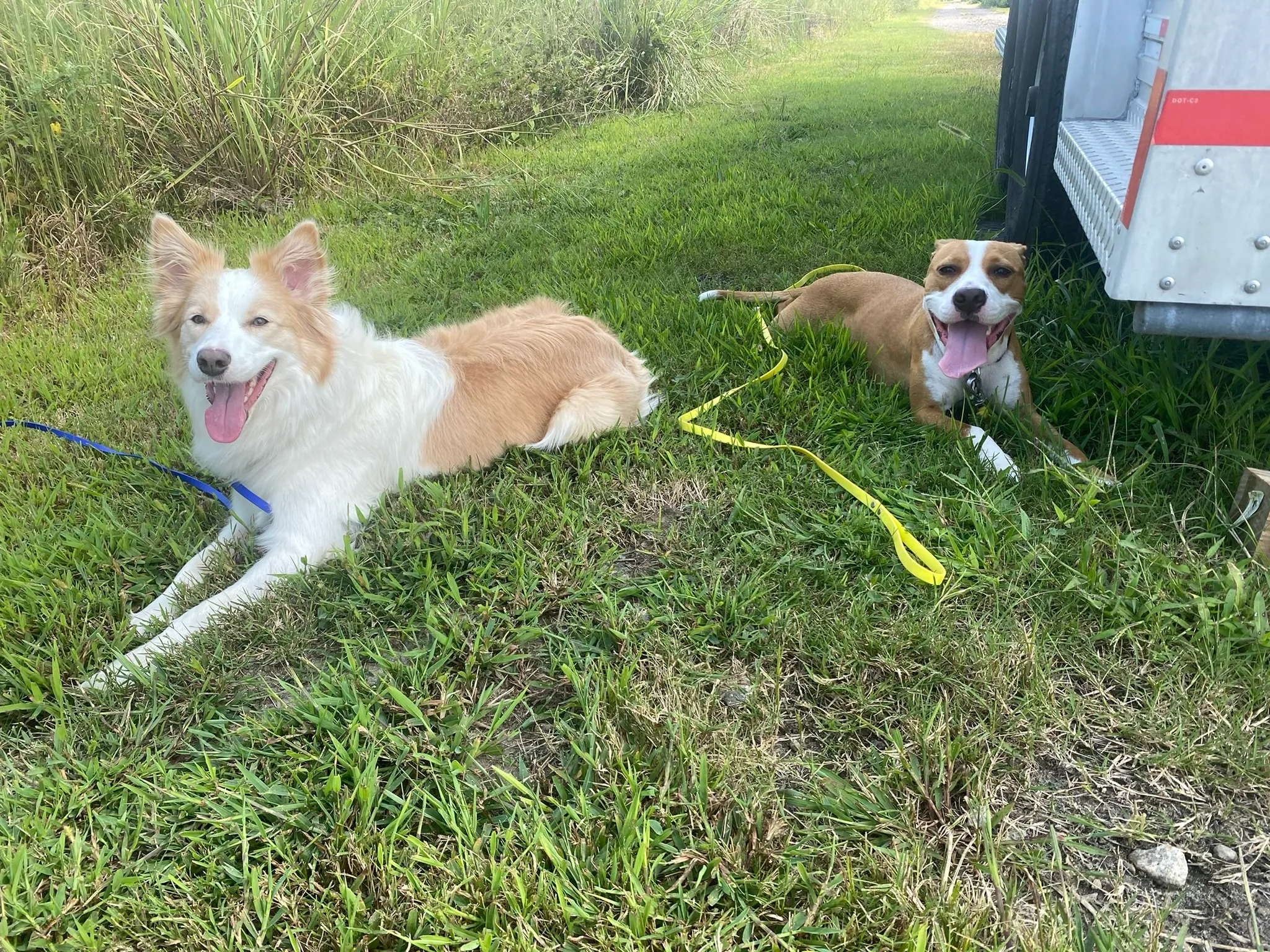
Initial introduction
Make sure to keep everyone safe. When introducing a new dog use safety measures like leashes, fences, and gates to keep everyone safe in case something goes wrong. If your dog has a bite history or hasn’t had any positive interactions with other dogs, muzzle training beforehand will be a must.
Parallel walking in a neutral space is a good first step to introduce the new dog to your resident dog. Keep an eye on both dogs’ body language. You want to see wiggly bodies, not stiff and staring at each other. If you haven’t seen an explanation of dog body language please check out this video about dog body language.
Keep your leashes loose! Tight leashes can add to frustration and make it less likely to have a good interaction. Avoid walking straight up the other dog, instead use an arc or curved approached. This looks much friendlier than approaching head on, which may look aggressive to the dog you are walking up to. When you are ready to have the dogs meet for the first time, keep the greeting just to a couple of seconds (3 seconds max) then call each dog away from the other (don’t pull on the leash!). Again we are looking for wiggly, friendly body language, open mouth, no tension in the dogs, and possibly play bows.
Give each other space and watch for friendly body language. If the first initial sniff went well you can try again and giving just a few more seconds to smell and investigate each other.
If all goes well, you may be able to let them go into a safe space where they can drag their leashes and explore each other and/or the environment. Try not to hover and give them space. Keep it short and sweet, a few minutes a few times works well. Don’t overwhelm them with each other’s presence.
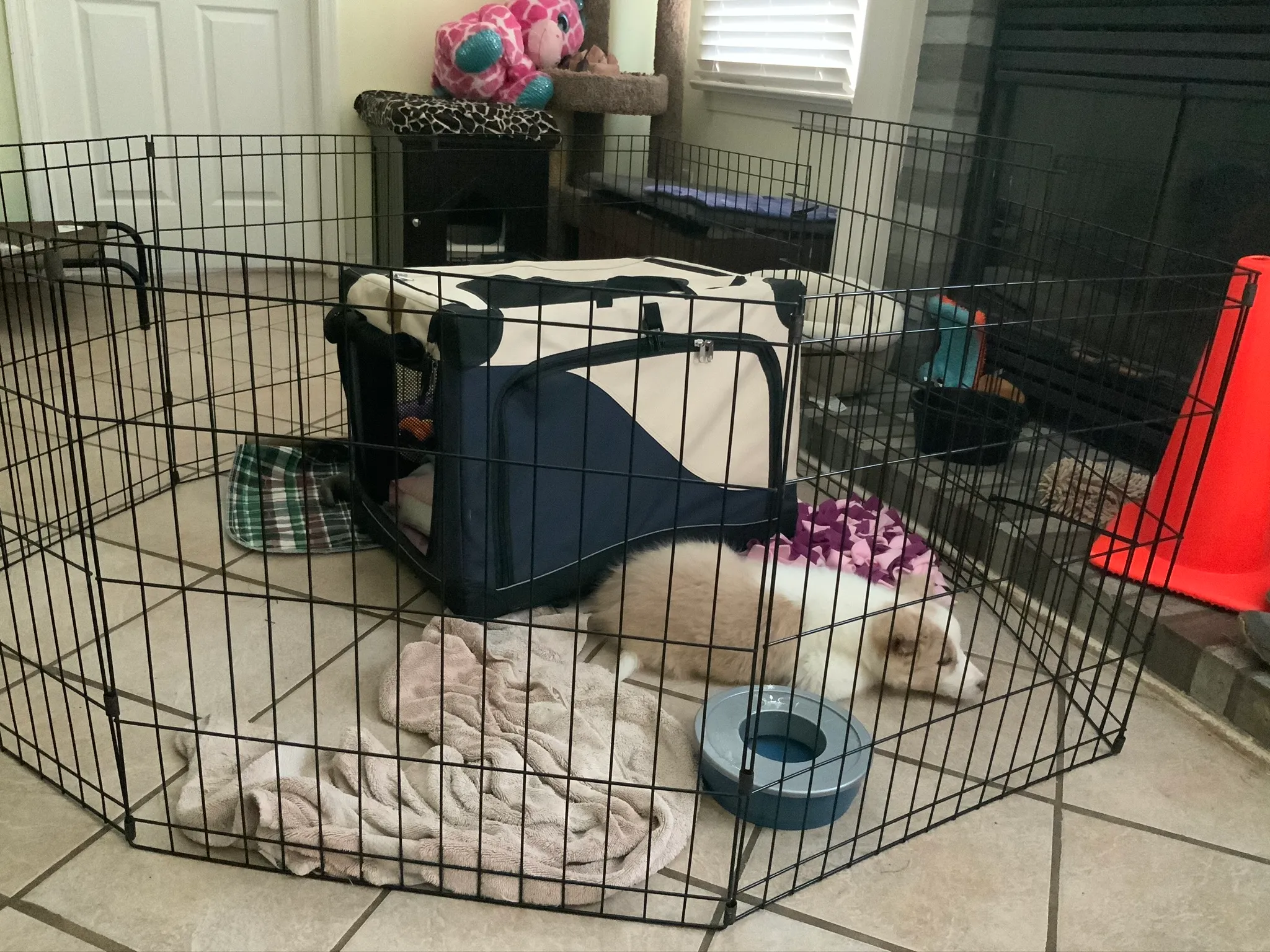
Keeping separated in your home
This is one of the most important stages in setting your dogs up for success. In the beginning, you’ll want to keep the dogs separated in your home most of the time. A playpen or baby gates are great ways to keep dogs separated, the new dog should have only a little bit of space until he has earned the right for more space (house training in a new environment, etc.) and you see the dogs being comfortable with each other in each other’s space. Your resident dog should have the same amount of space he is used to. Try not to take your resident dog’s favorite spots away just because it seems convenient for you to put the new dog there. Your resident dog(s) should have the same freedom as before the new addition.
Most issues between dogs in the same household are because of resources
When both dogs are out together, make sure to keep all toys, bones, and food away to avoid conflict between the dogs. Watch both dogs’ body language when you are giving attention to them. You may be the biggest resource even for a new dog in your home.
Still keep them separated most of the time even if it looks like they really enjoy each other. It is much easier to prevent issues from happening than to fix broken relationships between the dogs. As always in dog training slow is fast and fast is slow! Keep slowly adding good stuff to their new relationship instead of expecting too much too soon. Slowly add time between the two dogs spent together.
Do lots of fun stuff
Bonding experiences for most dogs include:
- Hiking together
- Eating together while physically separated (each dog with a chew or snuffle mat on different sides of a gate, or one eats in a playpen). This doesn’t work for all dogs. If you see tension between the dogs stop and find a different kind of activity for them.
- Sniffspots are a great experience for most dogs, lots of new smells in a new environment can make a perfect bonding experience
- Training together. Having both dogs practice tricks or obedience cues for treats will help them enjoy each other’s company. You may need to separate them by gates or a playpen if there is any jealousy.
- Playing. If both dogs enjoy playing with each other that is wonderful. Keep it short and sweet!
- Relaxing. If hanging out next to you and getting affection is something they enjoy and you see no jealousy, this can be a wonderful thing to incorporate into your day.
